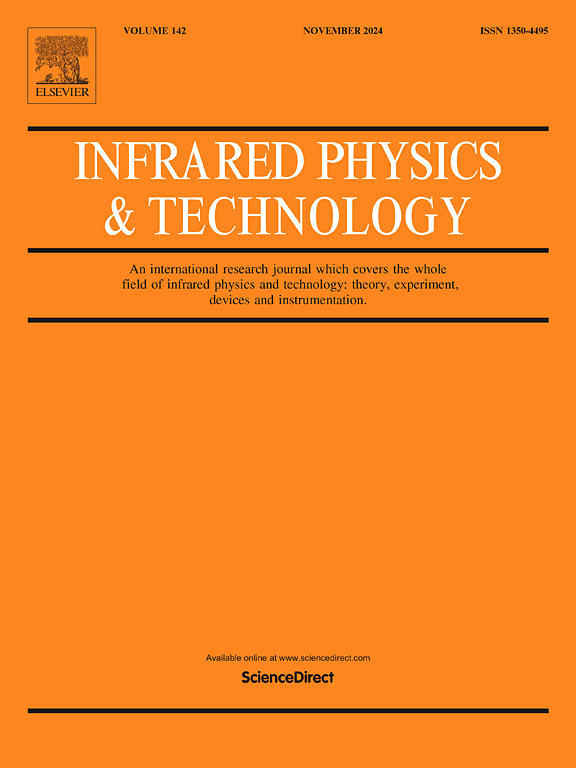分子动力学模拟研究了碲化镓薄膜在GaAs(100)、(211)和(111)衬底上的初始外延生长行为
IF 3.4
3区 物理与天体物理
Q2 INSTRUMENTS & INSTRUMENTATION
引用次数: 0
摘要
碲化镉材料因其卓越的性能和广泛的应用而受到高度重视。气相沉积技术是一种高效、经济的制备碲化镉薄膜的技术。在这项研究中,分子动力学模拟被用来比较CdTe薄膜在GaAs(211),(111)和(100)衬底上的早期生长阶段。结果表明,所有薄膜都遵循沃尔默-韦伯(VW)生长模式。值得注意的是,在(211)衬底上成功地生长了(133)取向薄膜,并通过计算证实了这一点。(100)和(211)衬底的界面具有较高的界面错配位错密度。相比之下,(111)取向薄膜虽然具有较低的位错密度,但在生长表面表现出明显的平行孪晶。这种现象可能是由于(111)平面在混锌结构中起到了滑移平面的作用。在三种衬底取向中,(100)和(211)均表现出优异的结晶质量。假设滑移形成错配位错的难易程度可能是决定薄膜结晶质量的关键因素。此外,(100)取向表现出最快的生长速度,使其成为气相沉积工艺的最合适选择。然而,由于无序边缘区域的存在,(111)薄膜表现出较差的结晶质量,这表明需要进一步优化其生长过程。一个潜在的解决方案可能涉及以倾斜角度沉积。此外,这些发现表明,在薄膜生长过程中,选择易于通过滑移形成界面间位错的生长方向可能是有益的。本文章由计算机程序翻译,如有差异,请以英文原文为准。
A study of the initial epitaxial growth behavior of CdTe thin films on GaAs (100), (211), and (111) substrates by molecular dynamics simulations
CdTe materials are highly valued for their remarkable properties and wide-ranging applications. As an efficient and cost-effective technique, vapor deposition is well-suited for preparing CdTe films. In this study, molecular dynamics simulations were used to compare the early growth stages of CdTe films on GaAs (211), (111), and (100) substrates. The results showed that all films followed the Volmer-Weber (VW) growth mode. Notably, a (133)-oriented film was successfully grown on the (211) substrate, and this was confirmed by calculations. It was also observed that the interfaces of the (100) and (211) substrates had a higher density of inter-facial misfit dislocations. In contrast, the (111)-oriented film, while having a lower dislocation density, exhibited significant twinning parallel to the growth surface. This phenomenon might be attributed to the fact that the (111) plane serves as a slip plane in the zinc-blender structure. Among the three substrate orientations, both (100) and (211) demonstrated superior crystalline quality. It is hypothesized that the ease of forming misfit dislocations via slip might be a key factor in determining the crystalline quality of the films. Additionally, the (100) orientation exhibited the fastest growth rate, making it the most suitable choice for vapor deposition processes. However, the (111) film showed poorer crystalline quality due to the presence of a disordered edge region, indicating that further optimization of its growth process is necessary. One potential solution could involve depositing at an inclined angle. Furthermore, these findings suggest that selecting a growth orientation that readily forms inter-facial dislocations through slip may be beneficial during film growth.
求助全文
通过发布文献求助,成功后即可免费获取论文全文。
去求助
来源期刊
CiteScore
5.70
自引率
12.10%
发文量
400
审稿时长
67 days
期刊介绍:
The Journal covers the entire field of infrared physics and technology: theory, experiment, application, devices and instrumentation. Infrared'' is defined as covering the near, mid and far infrared (terahertz) regions from 0.75um (750nm) to 1mm (300GHz.) Submissions in the 300GHz to 100GHz region may be accepted at the editors discretion if their content is relevant to shorter wavelengths. Submissions must be primarily concerned with and directly relevant to this spectral region.
Its core topics can be summarized as the generation, propagation and detection, of infrared radiation; the associated optics, materials and devices; and its use in all fields of science, industry, engineering and medicine.
Infrared techniques occur in many different fields, notably spectroscopy and interferometry; material characterization and processing; atmospheric physics, astronomy and space research. Scientific aspects include lasers, quantum optics, quantum electronics, image processing and semiconductor physics. Some important applications are medical diagnostics and treatment, industrial inspection and environmental monitoring.

 求助内容:
求助内容: 应助结果提醒方式:
应助结果提醒方式:


